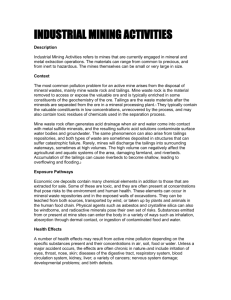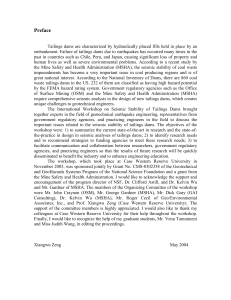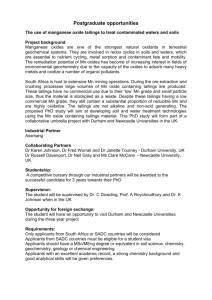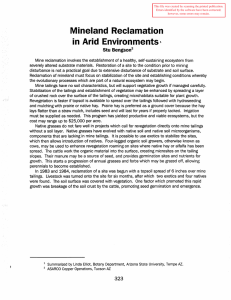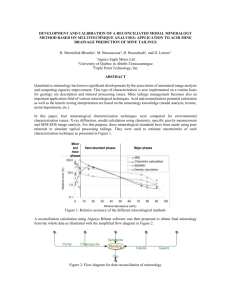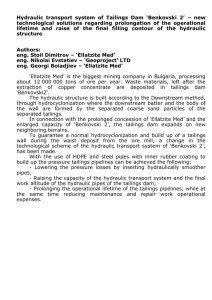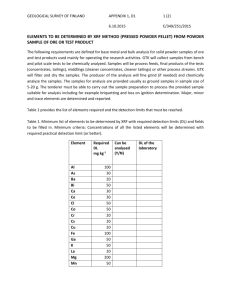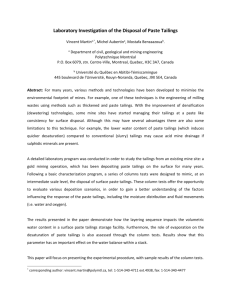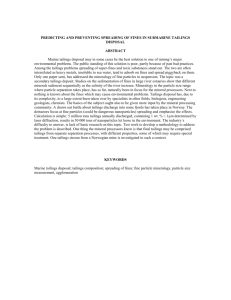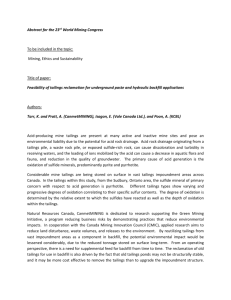Why do we need to study waste
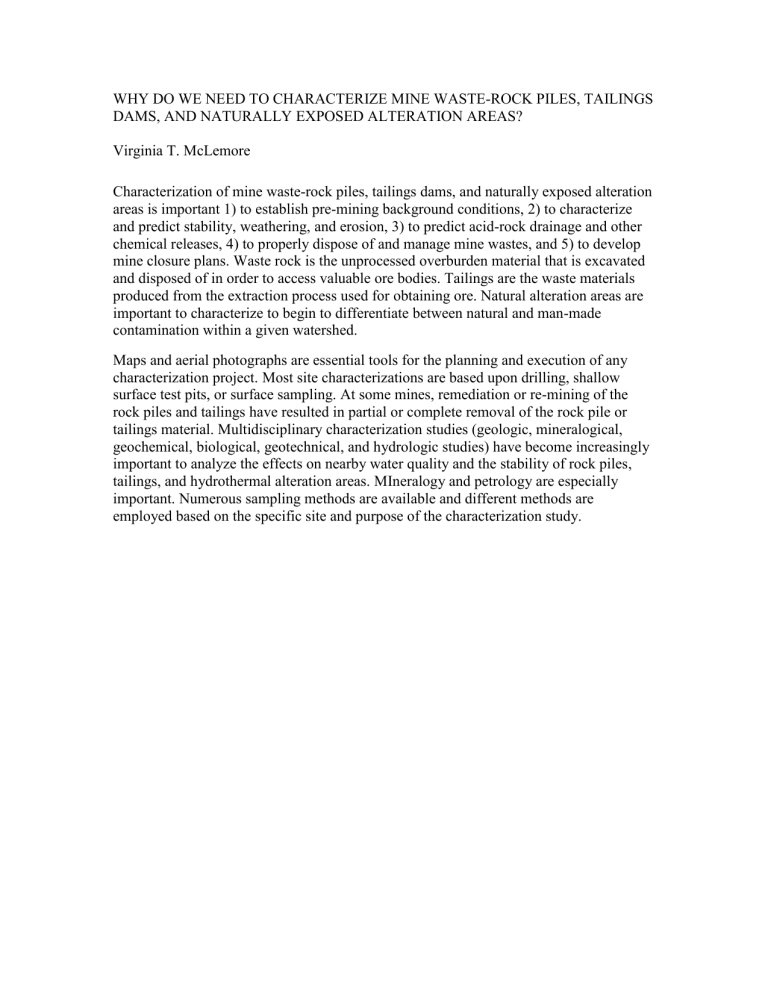
WHY DO WE NEED TO CHARACTERIZE MINE WASTE-ROCK PILES, TAILINGS
DAMS, AND NATURALLY EXPOSED ALTERATION AREAS?
Virginia T. McLemore
Characterization of mine waste-rock piles, tailings dams, and naturally exposed alteration areas is important 1) to establish pre-mining background conditions, 2) to characterize and predict stability, weathering, and erosion, 3) to predict acid-rock drainage and other chemical releases, 4) to properly dispose of and manage mine wastes, and 5) to develop mine closure plans. Waste rock is the unprocessed overburden material that is excavated and disposed of in order to access valuable ore bodies. Tailings are the waste materials produced from the extraction process used for obtaining ore. Natural alteration areas are important to characterize to begin to differentiate between natural and man-made contamination within a given watershed.
Maps and aerial photographs are essential tools for the planning and execution of any characterization project. Most site characterizations are based upon drilling, shallow surface test pits, or surface sampling. At some mines, remediation or re-mining of the rock piles and tailings have resulted in partial or complete removal of the rock pile or tailings material. Multidisciplinary characterization studies (geologic, mineralogical, geochemical, biological, geotechnical, and hydrologic studies) have become increasingly important to analyze the effects on nearby water quality and the stability of rock piles, tailings, and hydrothermal alteration areas. MIneralogy and petrology are especially important. Numerous sampling methods are available and different methods are employed based on the specific site and purpose of the characterization study.

